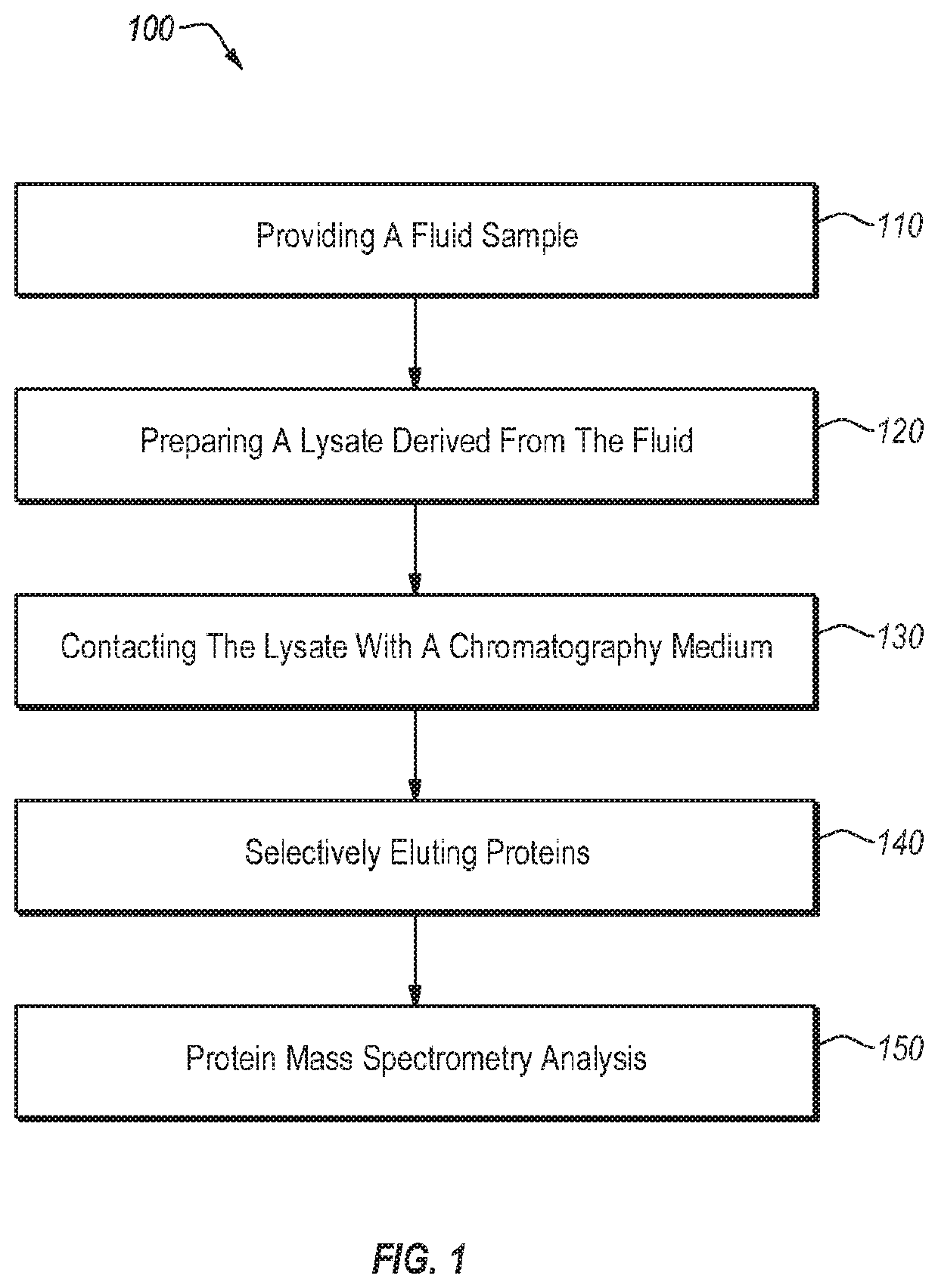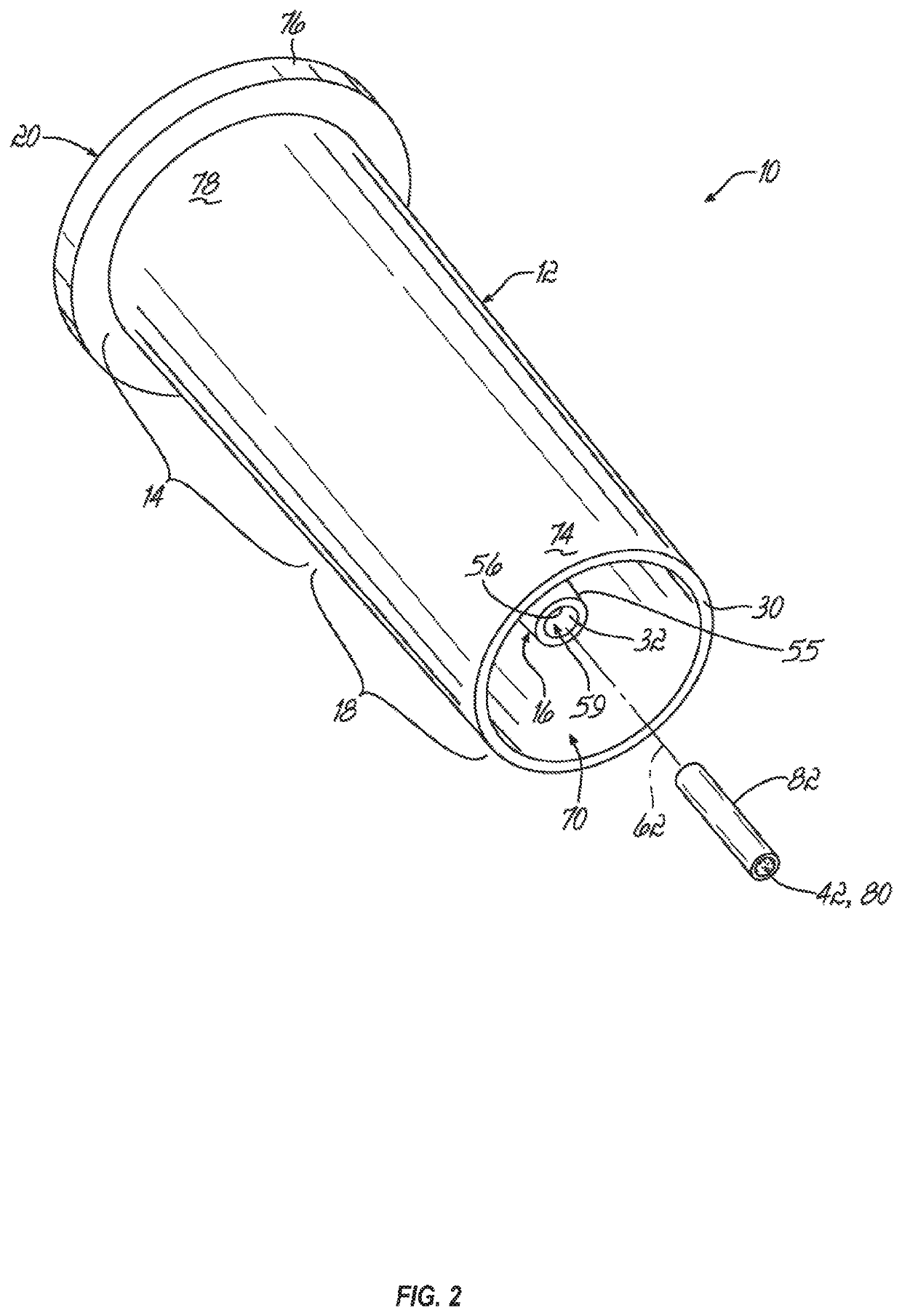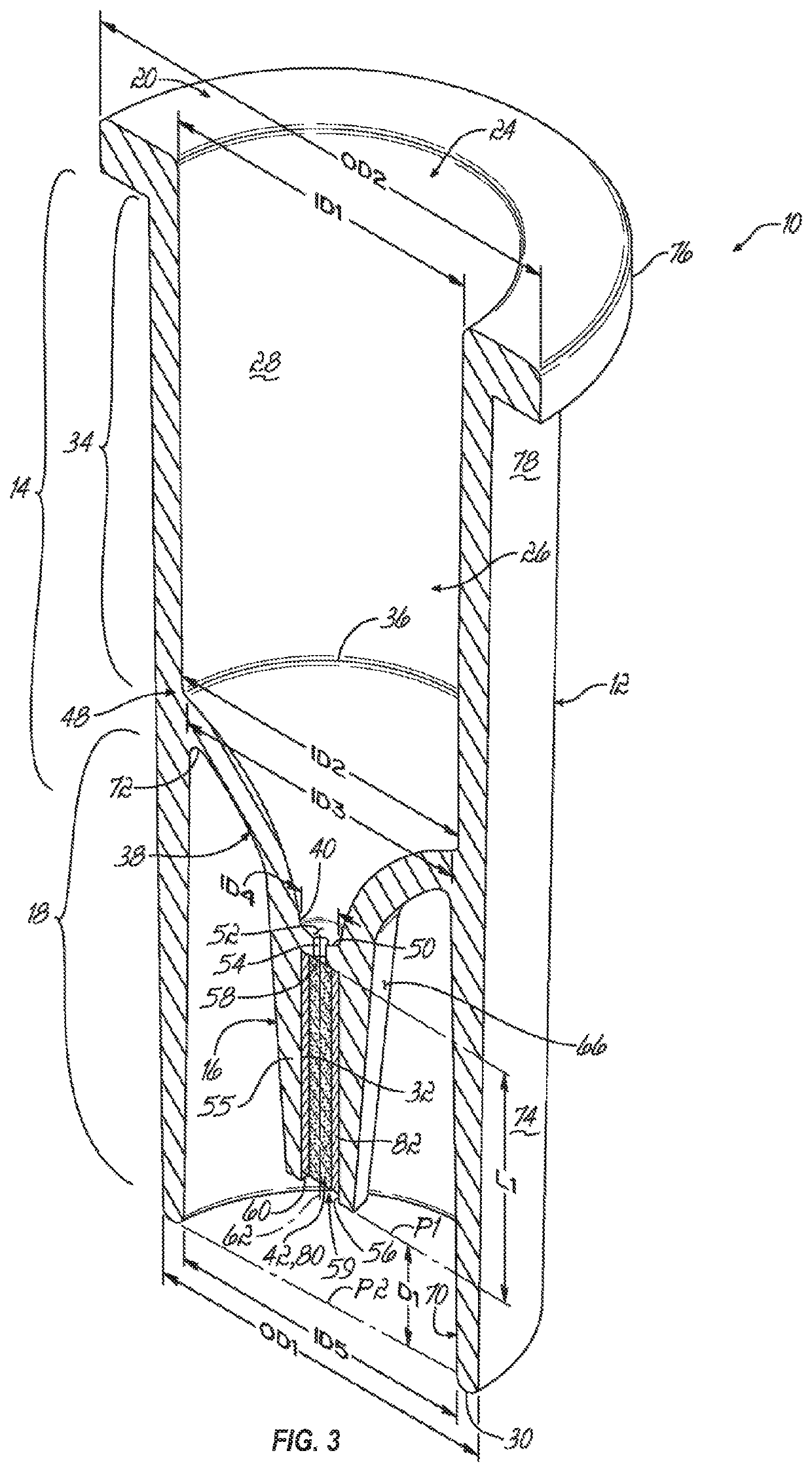Mass spectrometric methods and kits to identify a microorganism
a mass spectrometric and kit technology, applied in the field of mass spectrometric methods and kits to identify microorganisms, can solve the problems of overwhelming the signal, low overall signal intensity, and many clinical samples that include a complex and challenging matrix
- Summary
- Abstract
- Description
- Claims
- Application Information
AI Technical Summary
Benefits of technology
Problems solved by technology
Method used
Image
Examples
example 1
[0090]Described below is a method for identifying a microorganism that may use an extraction cartridge (e.g., a single-use extraction cartridge) like the one described above. The microorganism (e.g., an infectious agent) may be in a fluid that includes interfering mammalian proteins and proteins from the microorganism.
[0091]In an initial step, the method includes preparing a lysate from the fluid (e.g., blood, blood culture, cerebrospinal fluid, or urine) that includes the mammalian proteins and the proteins from the microorganism. In one embodiment, the lysate may be prepared by (a) lysing mammalian cells, if present in the fluid, by contacting the mammalian cells with a lysing agent (e.g., a natural or synthetic detergent) selected to lyse the mammalian cells but not cells of the microorganism, (b) separating the cells of the microorganism from the lysed mammalian cells, (c) washing the cells of the microorganism, (d) lysing the cells of the microorganism to release the contents t...
example 2
[0100]Described below is a kit for identifying a microorganism that may include an extraction cartridge (e.g., a single-use extraction cartridge) like the one described above. The microorganism (e.g., an infectious agent) may be in a fluid that includes interfering mammalian proteins and proteins from the microorganism.
[0101]The kit may include a sample lysis tube comprising a detergent (e.g., a detergent dried in the tube) selected for selectively lysing mammalian cells in the sample and not cells of the microorganism to be identified, a microorganism lysis buffer, and a single-use extraction cartridge comprising a chromatography medium for rapid and selective separation of mammalian proteins from microbial proteins. The kit further includes instructions for identification of the microorganism in a fluid by lysing mammalian cells in the bodily fluid; lysing cells of the microorganism; separating proteins of the microorganism from mammalian proteins using the extraction cartridge; a...
example 3
[0103]Referring now to FIG. 4, a specific method of the present disclosure. The method illustrated in the flowchart of FIG. 4 relates specifically to a method for separating proteins of a microorganism from a hemoglobin in a lysate derived from a positive blood culture. Nevertheless, while the method illustrated in FIG. 4 is described in relation to blood culture, the method of FIG. 4 is applicable to other sample types such as, but not limited to, urine, cerebrospinal fluid, and whole blood. The method is also applicable to pure or mixed culture derived from clinical samples including, without limitation, pus, lacrimal fluid, nasal discharge, lymph, synovial fluid, stool sputum, wound and body site swabs, and to samples derived from other sources including industrial or environmental samples such as food (e.g., meat and dairy samples, fruits, and vegetables), beverage, soil, water (e.g., municipal waste water), air, and swabs of surfaces.
[0104]Blood is a good example for the applic...
PUM
 Login to View More
Login to View More Abstract
Description
Claims
Application Information
 Login to View More
Login to View More - R&D
- Intellectual Property
- Life Sciences
- Materials
- Tech Scout
- Unparalleled Data Quality
- Higher Quality Content
- 60% Fewer Hallucinations
Browse by: Latest US Patents, China's latest patents, Technical Efficacy Thesaurus, Application Domain, Technology Topic, Popular Technical Reports.
© 2025 PatSnap. All rights reserved.Legal|Privacy policy|Modern Slavery Act Transparency Statement|Sitemap|About US| Contact US: help@patsnap.com



